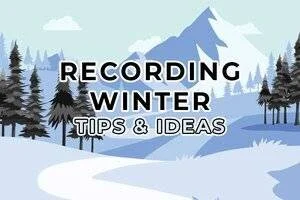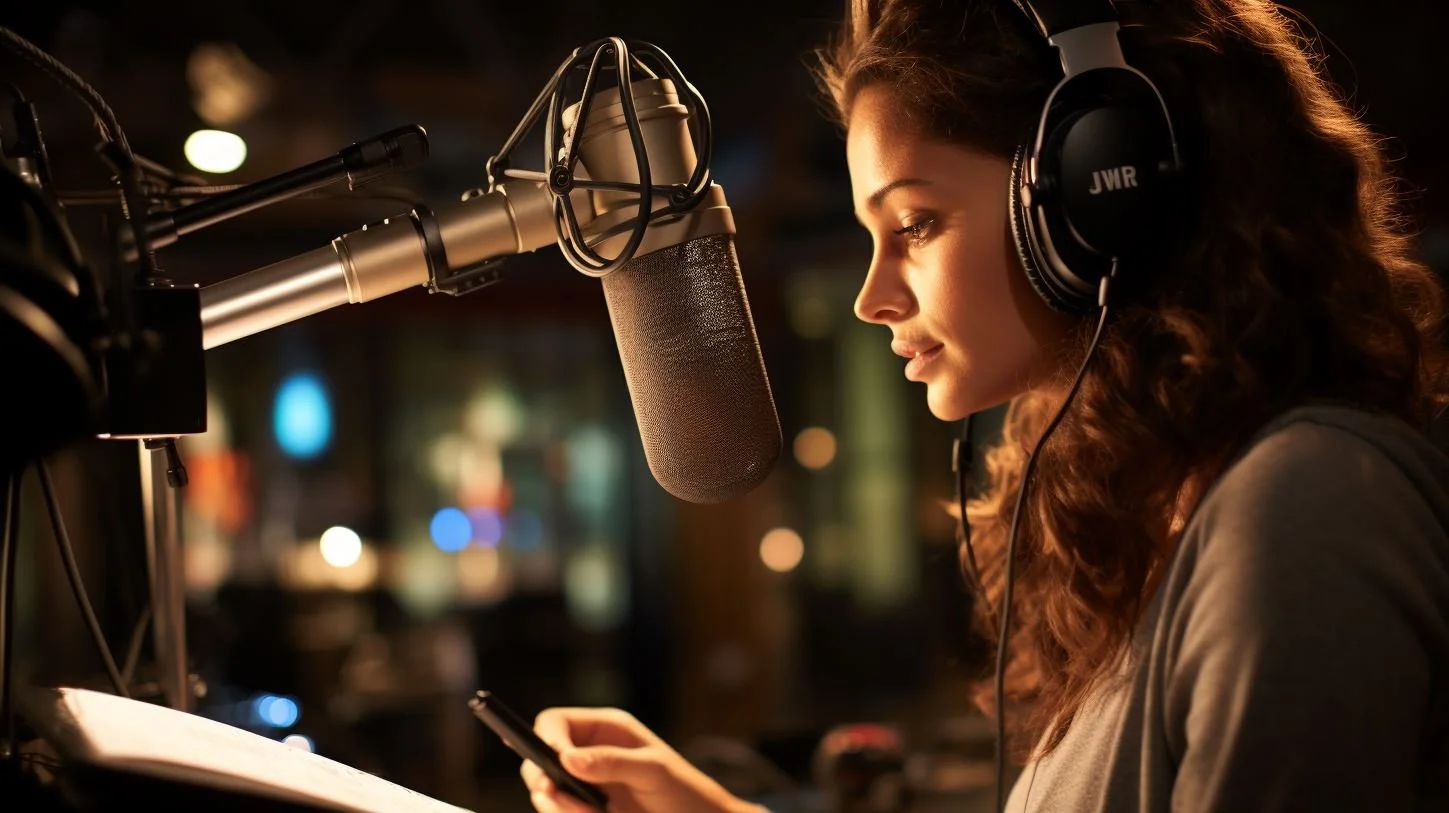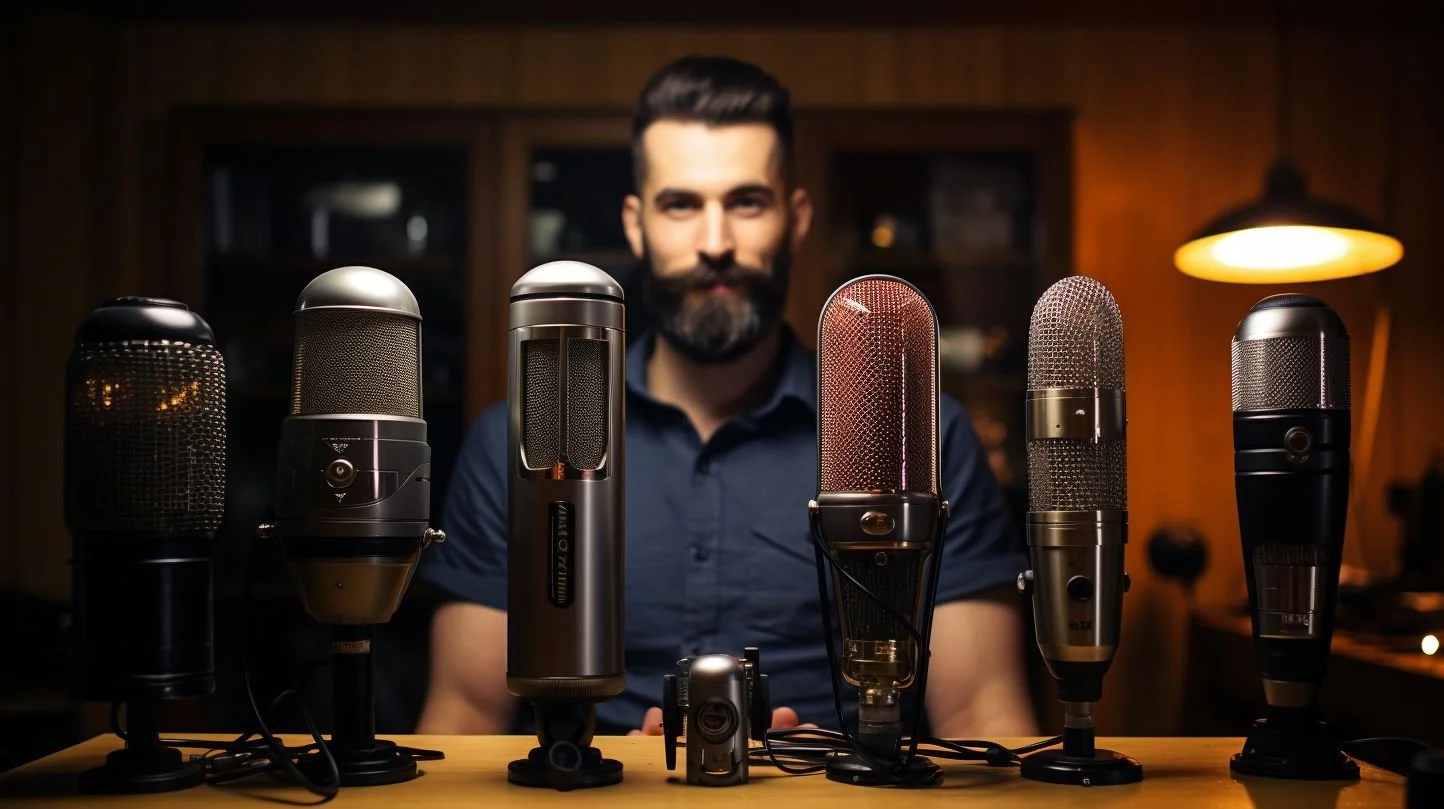Recording the Sound of Snow (Story and Process)
Join me on a winter field recording trip where I attempt to recreate a childhood memory.
Here in New England, we just got our first substantial snow of the winter season and it was a good one! Winter Storm Gail came as advertised.
Ever since the writing of my article, “Recording Winter”, I have been eagerly awaiting some snow. As I watched the predictions for this storm, I became increasingly excited as snowfall predictions kept going up and up!
At 6pm on December 16th, the first snowflakes started to fall. The snow continued through the night and dropped 14 inches (35.5cm) of snow during a 12 hour window. Average wind speeds were 15 mph (24km/h) with gusts up to 22 mph (35km/h).
During this window, I was able to capture two field recordings.
Wind Chimes in the Snow
Field recording gear used in this recording. DIY windscreen, windbubbles, bungee cord, Olympus LS10.
The first field recording that I setup was of wind chimes just outside my front door. For this recording I used my Olympus LS10 field recorder, Bubblebee Windbubbles, a DIY windscreen, and a bungee cord.
With the high wind speeds, I knew I had to double-down on my wind protection. To do this, I attached lavalier windscreens directly over the internal microphones of the LS10. The “size 4” windbubbles from Bubblebee are a bit of a stretch to get on, but they work great once attached. You can see the specific ones I used here.
The second layer of wind protection was one of my own creation. I initially built this for my first field recorder, the DR-40, but now use it with the LS10. It is way oversized for the LS10, but it works to my advantage by creating a larger pocket of still air around the internal mics.
Bungee cord in action.
With the wind protection secure, I then went outside and attached the body of the LS10 to a decorative metal wire thing on my porch with a short bungee cord. I used to use electrical tape for this purpose but I found it wasteful and I didn’t like the sticky residue that it left on my gear.
The bungee cord worked perfectly for this field recording and held the LS10 in-place for over three hours. I was really pleased with this performance and I am looking forward to using bungee cords to secure my gear around larger objects like trees.
My bungee cords are round, but I think flat ones would work better for securing most field recording gear. Because of their strap-like design, they have more surface area contacting your equipment and would provide more holding power.
After recording for three hours, I brought in the LS10 and listened to the recording while falling asleep. It turned out that the extra wind protection was not enough for the gusts of wind, but I think that it actually sounds natural so I left it in the final recording.
Unfortunately, there were still a lot of people and planes active between 7-10pm, so I captured a lot of noise pollution. The most common source was vehicle traffic from a main route about 0.5 miles away.
Because of this noise pollution, 13 minutes was the longest, uninterrupted clip that I could pull from the greater, 3-hour track. The final recording is below, please listen with headphones and enjoy!
RELATED: Winter Field Recording Guide
The Sound of Falling Snow
I was even more excited to setup my second field recording of the evening. My plan was to recreate an auditory experience from my childhood.
I have always loved playing in the snow. One of my favorite things to do was to lie down in the snow and listen to the subtle sounds of snowflakes landing on my jacket. I think this may have been my first ASMR experience and it was pure peace.
As soon as I finished setting up the LS10 recording, I grabbed my gear and started preparing my drop-rig for the backyard.
Gear used in this recording. DIY binaural microphone, Sony PCM D100, Sea to Summit Dry-Bag. (Not pictured — winter jacket).
Once outside in my backyard, I laid down my winter jacket and nestled the external mic into the hood. I then ran the cable down the length of the jacket and zipped the jacket shut.
From there, I plugged the mic and my headphones into the D100. I then made minute adjustments to the position of the jacket and microphone and then set my gains.
Once I was happy with the sound, I put the D100 into my drybag and tucked it into the bottom of the jacket.
This drybag is something that I use all the time but I usually don’t mention. It’s basically a waterproof bag that is an essential piece of gear for me whenever I am using my external microphone.
It protects my recorder from the elements including rain, humidity and morning dew. It also holds my gear really nicely when I’m recording and when I’m not. After setting up a recording, I clip the buckle strap to my tripod and it safely hangs there without putting any strain on the microphone cable.
The exact bag that I use is the Sea to Summit 4L. You can find it on Amazon here.
Snow recording in progress. This photo is only 6 minutes into the recording and already it is covered in snow. The microphones are in the hood.
After recording for 4 hours and 22 minutes, I dug my jacket out of the snow and brought everything inside.
The next morning, I brought the files into Izotope RX and began sifting through the recordings. I was shocked at how much noise pollution there was.
I had hoped that this blizzard would keep most humans indoors but I was wrong. Cars, trucks, planes and even trains seemed to take no notice of the storm and came in droves.
As I mentioned in my “Recording Winter” article, sound travels further in the winter because the air is dry and there are no leaves on the trees. This is a challenge when recording in the winter and I certainly faced it.
Below is a screenshot of a a 55 minute track. Each white triangle above the spectrogram marks an incident of noise pollution. In total, there were 63. That’s more than 1/minute!
55 minute track with 63 incidents of noise pollution!
I even recorded a train in the distance and I have never heard a train in my backyard before. I actually looked up how close the closest railway is and I found it…nearly 5 miles away (8km)!
Now I know train horns are loud, they average 100 decibels, but I was still shocked that I could hear them. If you’re interested, on of many instances is below for you to hear.
The noise continued through the entire, 4+ hour recording. The longest, clean recording that I was able to pull out was only 5 minutes and 27 seconds. You can listen to that file below ↓
Success?
So was I able to successfully recreate my childhood memory? Not quite.
As a kid, I was usually not lying down underneath a blizzard like Winter Storm Gail. If I had, I would have been buried in minutes and would be at serious risk of hypothermia.
While I was able to capture a powerful recording of heavy snowfall and whipping winds, it is far from winter’s peaceful embrace.
I hope that our next snow event is more gentle so I can try again.
Final Thoughts
Although I wasn’t able to record what I had envisioned, I did end up with two really great field recordings to add to my library. I also learned a new technique, bungee cord strapping, and got more practice recording in extreme conditions.
I hope you have enjoyed reading through my thoughts and experiences. What do you think about the recordings I captured on this outing? Feel free to let me know, or ask me anything via my contact page.
Support Acoustic Nature
If you enjoyed this post and would like to help support Acoustic Nature, please consider "buying me a coffee" or becoming a Patreon with the buttons below.
As a thank you for your support, Patreon supporters receive a copy of Field Recording For Beginners, exclusive access to the full Behind The Sounds video series, nature sound library downloads, and more.
If you are unable to support the site financially, please share this post with others, or leave a comment below letting me know you enjoyed this post! Both are free and help the website grow. Thank you ♫
Thanks for reading,
-Jared
















